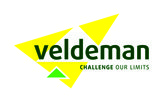Air structure, fabric bubble, sports bubble, whatever you choose to call it, at first look an air supported structure seems like the ultimate solution to a cover a sports field, tennis court, or swimming pool. Manufacturers and sellers of these systems will list the following as advantages of air structures:
-
Inflate it when you need it, and deflate it when you don’t.
-
Erect a structure in an afternoon, without the need for specialized labor.
-
Enjoy the entire enclosed area – it is free of support poles and beams (clear span).
-
Air structures cost a fraction of other alternatives.
Are these claims true? Is an air structure really a viable and cost effective temporary solution?
Read on to learn more.

The trouble with bubbles: They burst.
In fact, most of the claims are totally true! Air structures are a good alternative for a temporary cover that will be used, then stored, typically on a seasonal basis. They are very easy to erect, offer clear span space within, and the initial cost of an air structure is typically less than other alternatives, like a fabric structure, steel building or traditional construction.
However, with each claim there’s a substantial caveat or downright disadvantage that you won’t likely discover until after you’ve already made a significant investment of money or time.
For one, the air structure must be continually inflated, or it will collapse. The pumps and compressors must run non-stop, 24 hours a day, 7 days a week, 365 days a year, which can cause a significant increase in utility bills.
In fact, if you plan to use your air structure year round, monthly utility bills can reach $10,000+. Three quarters of that is spent keeping the structure inflated. What’s more, in the event of a power outage, you’ll need backup generators to keep the inflation equipment running.
In terms of the transitional use, air structures can be deflated and stored on a seasonal basis, but are often in need of repair from cracks in the membrane when they are re-inflated. Plus, extreme care must be taken when storing the structure, to avoid mold and mildew growth during storage.
Fabric structures, on the other hand, can be installed on a temporary (seasonal) or permanent basis, require only a small generator for backup lighting (if desired or required), and don’t have the risk of not re-inflating. Furthermore, if prepared and stored properly, there is minimal risk of mold growth.
As for the claim of erecting a structure in an afternoon without specialized labor, this is totally true! Only at least one member of the non-specialized labor better be well versed in setting up pumps and compressors, and have experience erecting an air structure! Otherwise, all it takes is you and 50 REALLY STRONG friends.
For many fabric structures, construction from beginning to end can be completed in 2 to 3 months, and can be accomplished in what would otherwise be the off season.
Erecting an Air Structure: Cheap labor, and lots of it.
In terms of the usability of the interior space, air structures are designed with sidewalls which are sloped toward the center of the structure, and begin to slope almost immediately (see photo below). Picture the area in your attic that’s furthest away from the roof peak, you know, where you always hit your head. Similarly, in a bubble, the area that is in close proximity to the wall, within say 6 feet, is unusable, except for storage.

Air Structure Profile: Slope of sidewalls impacts usable area inside
A fabric structure is designed to have nearly all of the contained area be usable, thanks to the profile design of the beams that support the structure. So you don’t have to buy more structure to allow for unusable space.
Finally, there’s the notion that air structures cost a fraction of other structures. And while this is true of the initial investment cost, the cost of utilities and upkeep on an air structure will eat away at that difference, and bring it equal to a fabric structure within 7 years. After that, air structure owners continue to invest 5 figures per month in utilities, where the fabric structure utility requirements consist only of lights and heat.
Before making the commitment to an air structure, it is important to do your due diligence in investigating the total cost of the structure over time. If you do, you will likely find that it’s not as inexpensive as you once thought, and you’ll open your horizons to a better, longer lasting, more reliable, safe, and structurally sound alternative, that’s still a fraction of the cost of traditional brick and mortar construction.




